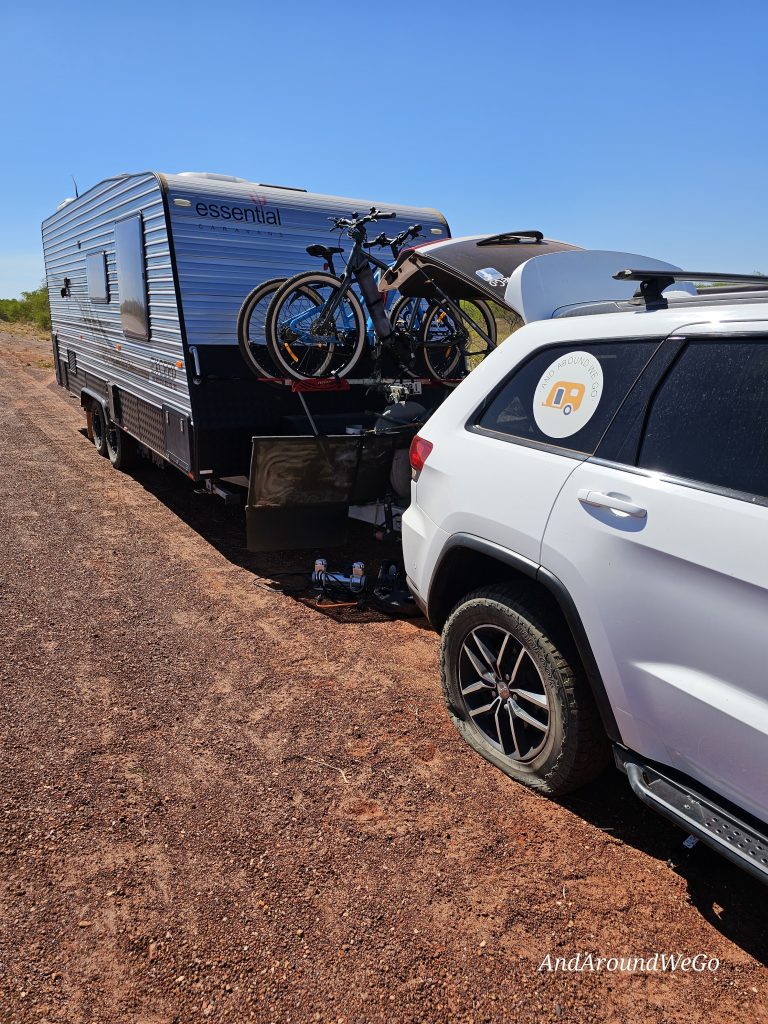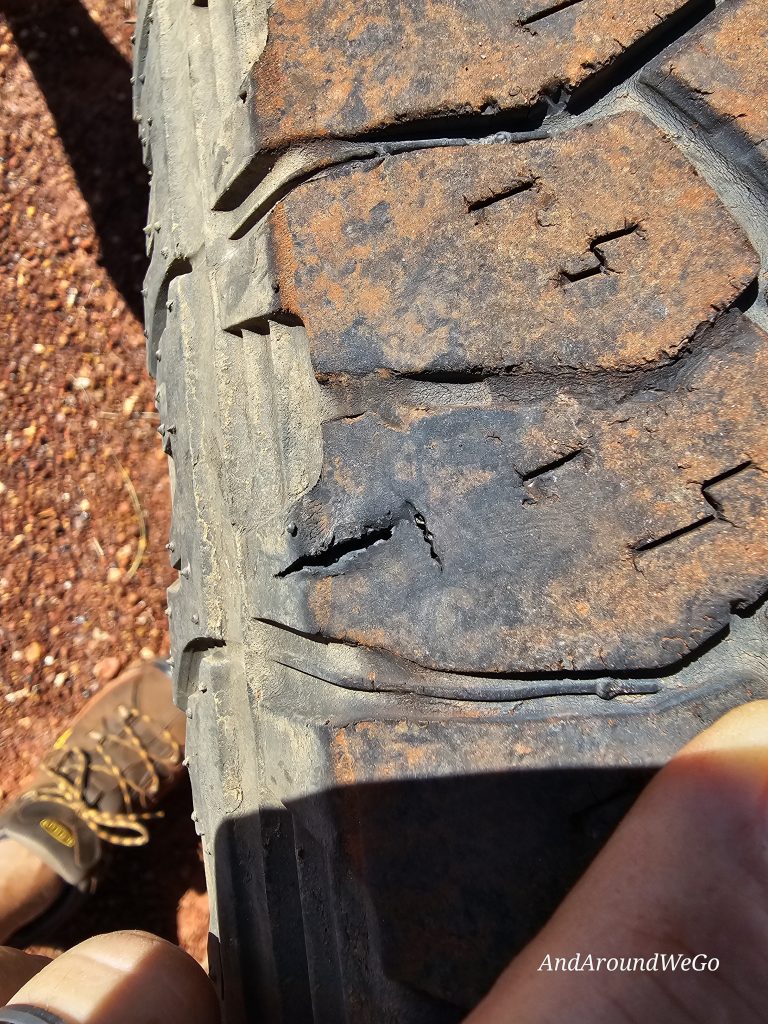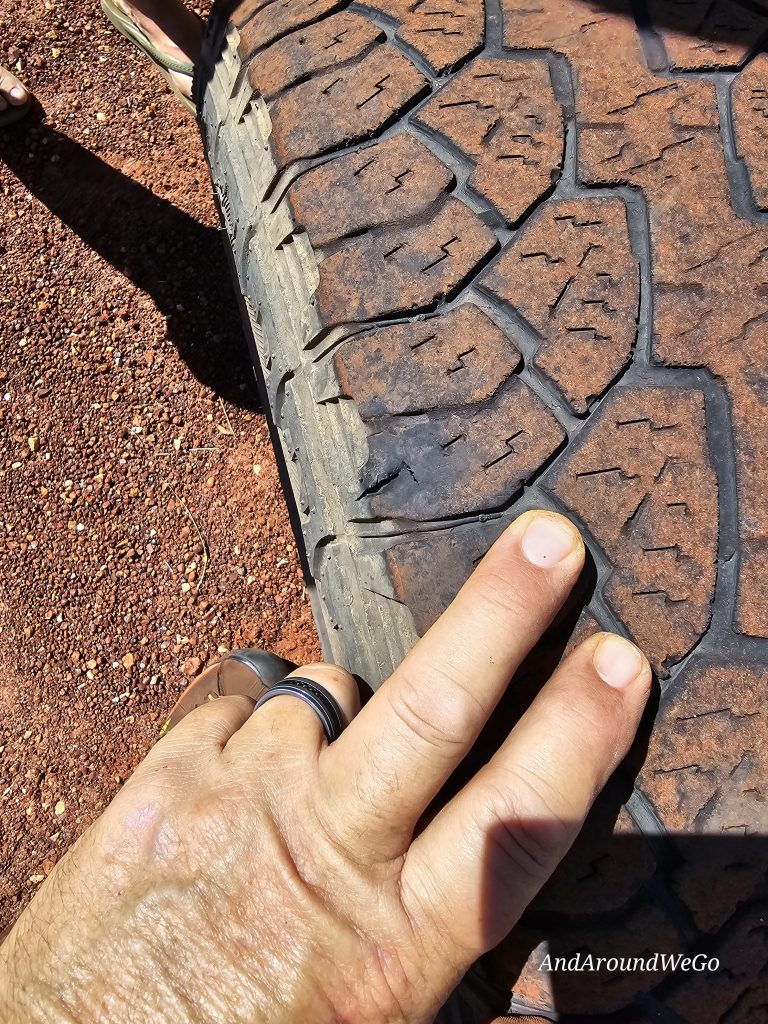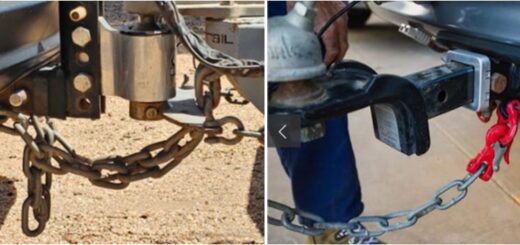Tyres – how old is too old?
How old are tyres allowed to be?
This post was prompted by a conversation today where I was told that my tyres are too old and should I have a blowout my insurance would be voided as they are more than 4 years old. I have also heard similar things repeated on many groups, 5 years max, 7 years max, check with your insurance company is a really popular reply too.
First off, lets clarify the law – there is NO law in Australia that dictates the maximum age of a tyre. There are various guides around that vary from 4 years to 7 years to 10 years. In general the person or company selling you the tyre will tell you 4 years as they get more sales. The more honest ones will say 10 years is really getting too old.
So what are the rules? The rules are very simple. For a motor vehicle, caravan, trailer, motorbike etc to be road legal, one of the requirements is the tyres must be free from defects and have adequate tread. Free from defects – this is referring to not separating (bubbles appearing in the tread or sidewall), not perishing (small cracks or splits appearing in the sidewalls), and no physical damage like cuts or gouges in the sidewall.
What happens to tyres as they age?
Tyres are made of various types of textile, steel and rubber compounds that have properties that evolve over time. As the rubber in a tyre gets older and is exposed to the elements, the strength of the bond between the rubber and the steel belts is reduced. When an old tyre is put under load, cracks in the rubber will begin to form.
These cracks may appear on the tyre’s surface, but they can also appear out of sight within the structure of the tyre. Eventually, the cracking can even cause the steel belts in the tread to separate from the rest of the tyre. Driving on such a tyre is a serious safety risk.
In addition to concern of the tyre falling apart, the rubber in the tyres also hardens and loses its grip as it ages. Older tyres will slide when braking cornering much easier than when they were new. Whilst this is not so much of an issue on a caravan or trailer, on your car this will make the driving in the dry a little concerning and in the wet downright dangerous.

How do you tell the age of your tyres?
All tyres will have the manufacture date stamped in the rubber on the sidewall, such as below. It will be 4 digits, the first two indicating the week of the year and second two the last 2 digits of the year. The example below is showing the 18th week of the year 2000. If you can only find a 3 digit code – throw it out, its way, way too old!
History lesson – Date stamps started around the 1970’s and were only 3 digits, the first two were the week as per above, and the last was the year. A Tyre stamped 177 was made in week 17 of either 1977, 1987, or 1997… there was no indication as to which decade it was! Since 2000 they have changed to the 4 digit codes we now have.

Is there anything else to be aware of?
Yes – the majority of tyre ‘blowouts’ (around 75%) are caused by low pressure causing the tyre to over heat and the rubber separates. To keep a good eye on your tyres I strongly recommend (and use myself) a TPMS – Tyre Pressure Monitoring System. Consisting of small radio transmitters screwed onto the tyre valve stem with a display in the vehicle, I cover this in more details in my tyre pressure post. Keeping an eye on the pressure, the TPMS will alert you or sound an alarm (or both) if the tyre pressure or temperature is outside a preset range, or if it detects a rapidly deflating tyre. Pulling over immediately to rectify the problems will avoid the tyre blowing out and possibly save your caravan or car from disaster (potentially rolling over with a single axle van or a car tyre). The other 25% of causes include running over a sharp object, hitting a pothole too hard, hitting the gutter, overloading the vehicle (which means the tyres are under inflated for the load), or finally of course – the tyre is simply too old and literally falls apart.
UPDATE: Travelling from Broome to Marble bar, just a couple of weeks after writing this post, I had a warning the rear right tyre on the Jeep was going down fast. Pulled over and had a cut in the tread too big to plug – must have run over something on the highway (this happened after approx 3 hours of highway cruising)! Swapped to the spare and disaster avoided. Tyre had deflated rapidly from 41PSI (Hot) to 27PSI, setting off the alert. A few minutes after pulling over I had emptied the boot to get the spare and the rim was already on the ground… Another few minutes driving without the TPMS alert and I would have driving at 100kmh on a totally flat tyre – it would have shredded or caused a ‘blowout’, then the result could have been disastrous.



So, do we need to ‘check the allowed age with our insurer’? In a word – No.
Insurance companies state that for the insurance to be valid, the vehicle must be ‘Roadworthy’. As we have just discussed above, tyres are definitely part of the vehicle being roadworthy, but note there is no tyre age requirement, just condition.
So if your insurance company tried to wiggle out of a claim stating the tyres were too old but there was no signs of damage or deterioration (especially in a State that has annual vehicle inspections for registration renewal), simply ask them to forward to you where in legislation this is stated so that you can gather it together with the rest of the documentation to forward to the Insurance Ombudsman to assist you with your claim. You will probably find they hesitate for a while then back down or start another tactic to try and deny your claim.
To end off, let me leave you with an excerpt from a document produced by the Australian Tyre Industry Council Ltd. This sums it up pretty well :
When is old… too old ? In addition to regular tyre inspections, most tyre manufacturers recommend that a tyre professional inspects your tyres at least once a year once they reach five years of age, regardless of actual wear or time in service. In order to ensure safe driving for you and your family, it is good practice that tyres should be removed from service and properly recycled once they reach ten years of age, regardless of appearance, mileage or actual wear
Australian Tyre Industry Council Ltd.
Full document available from the Australian Tyre Industry Council Ltd. Website – https://www.atic.org.au/
Photos of tyres and text relating to tyres degrading with age sourced from the Bridgestone Tyre Company website.






Recent Comments